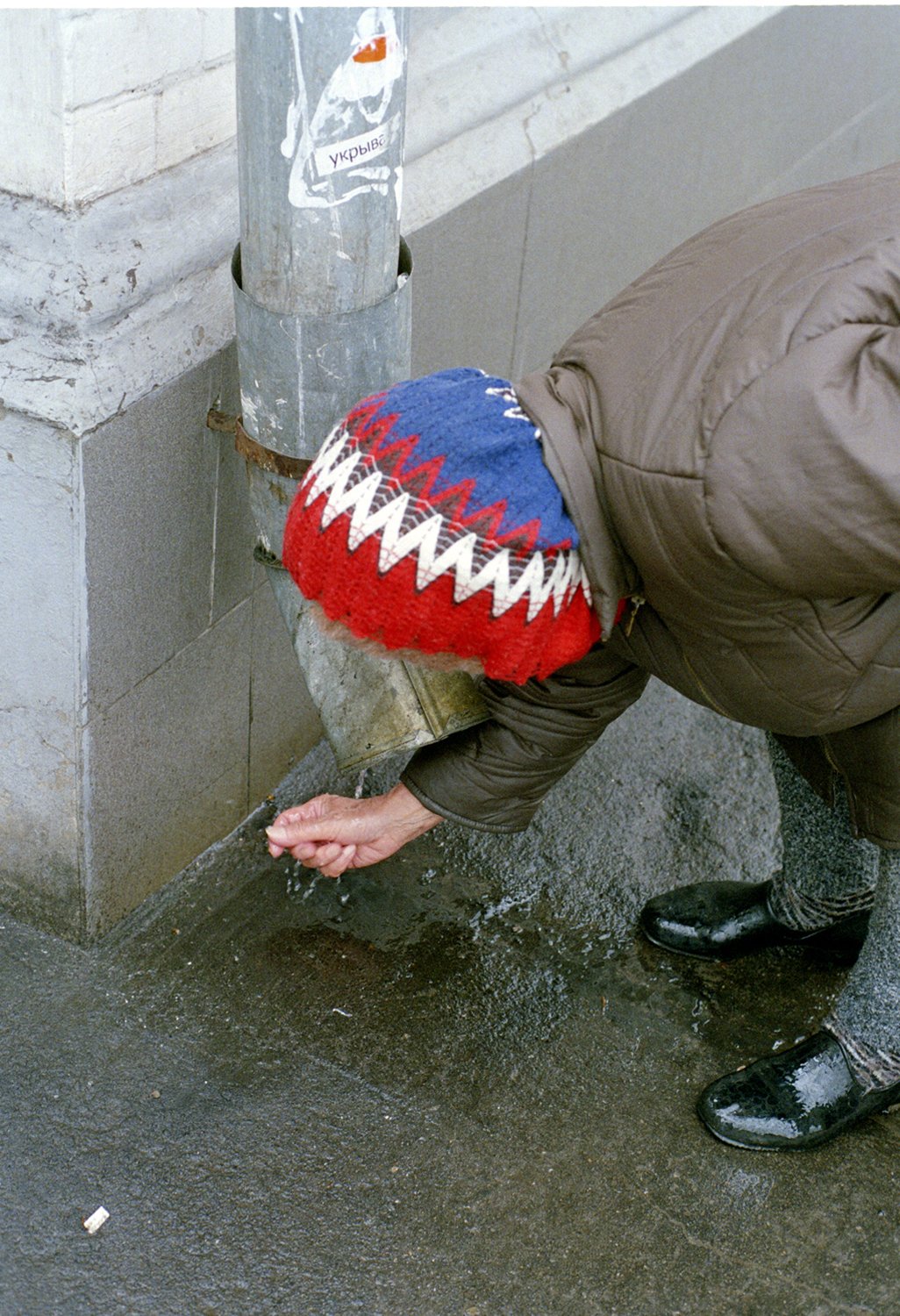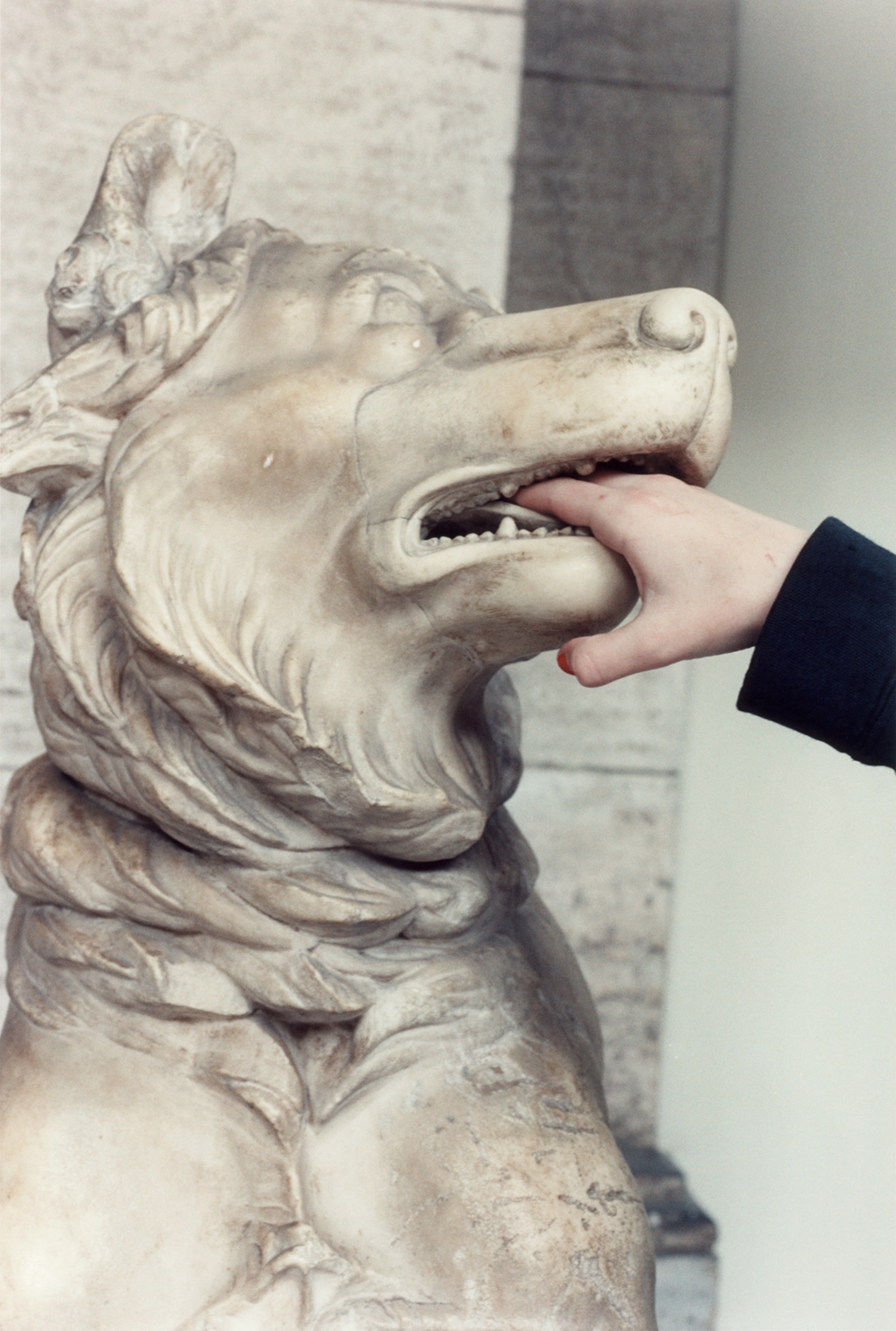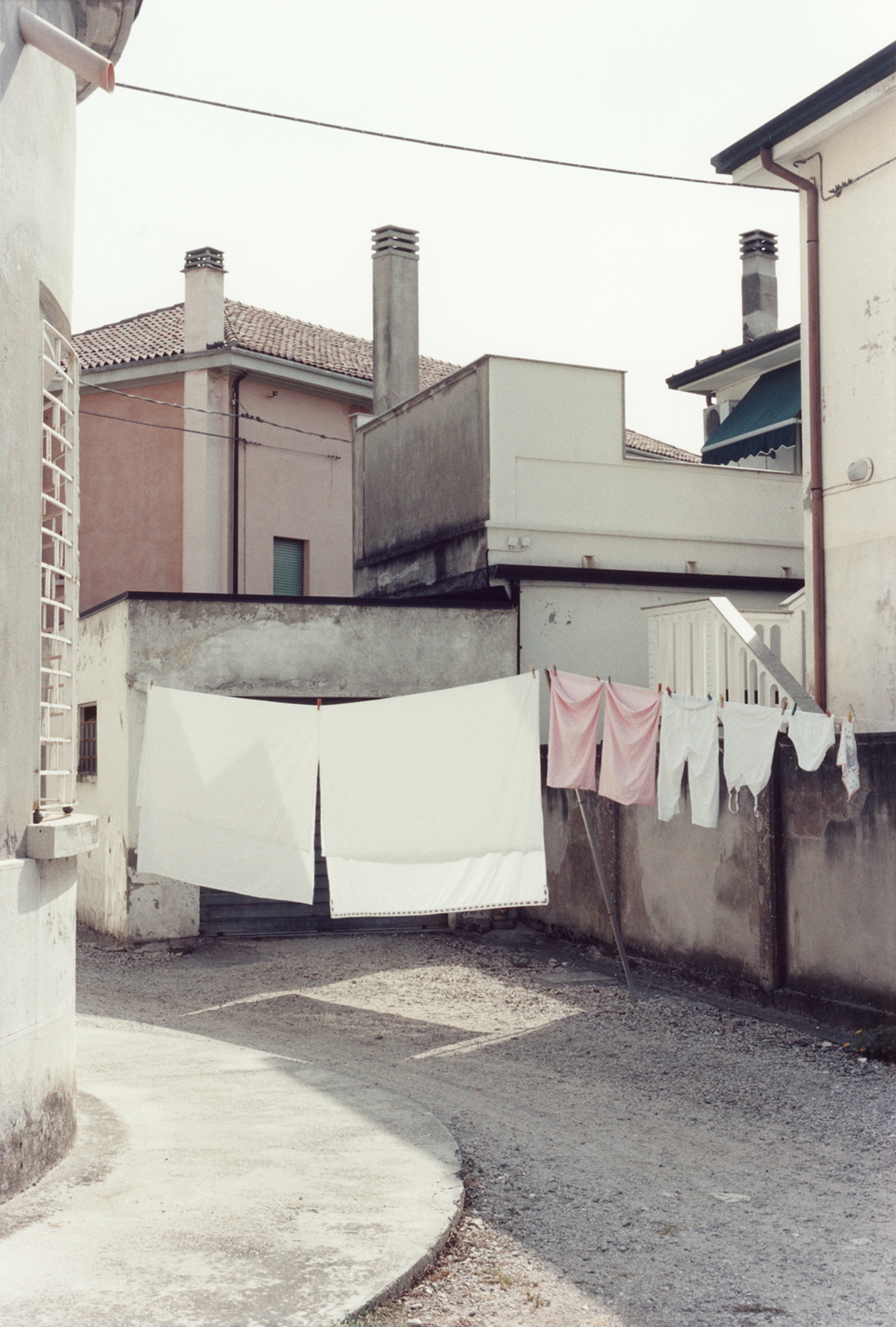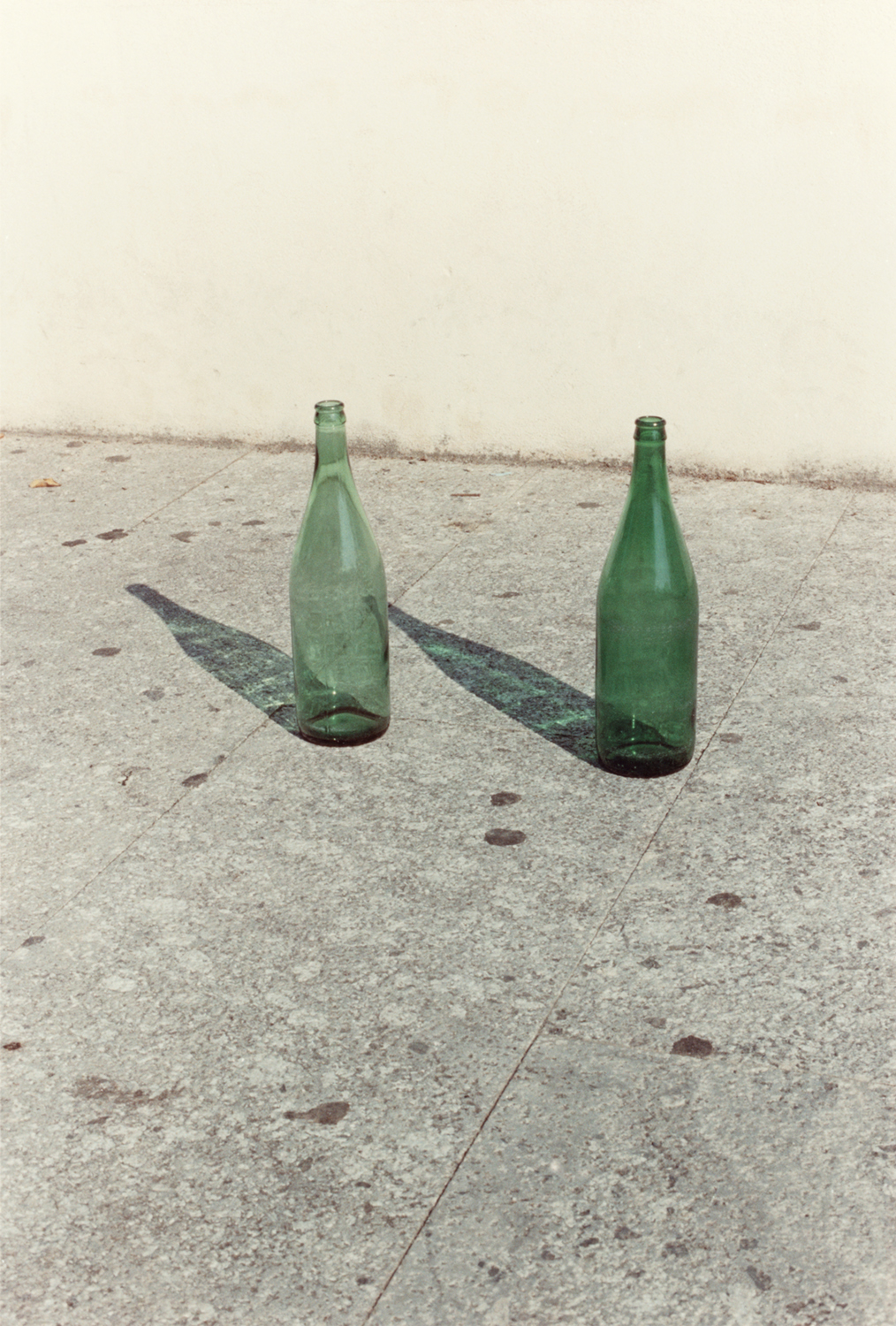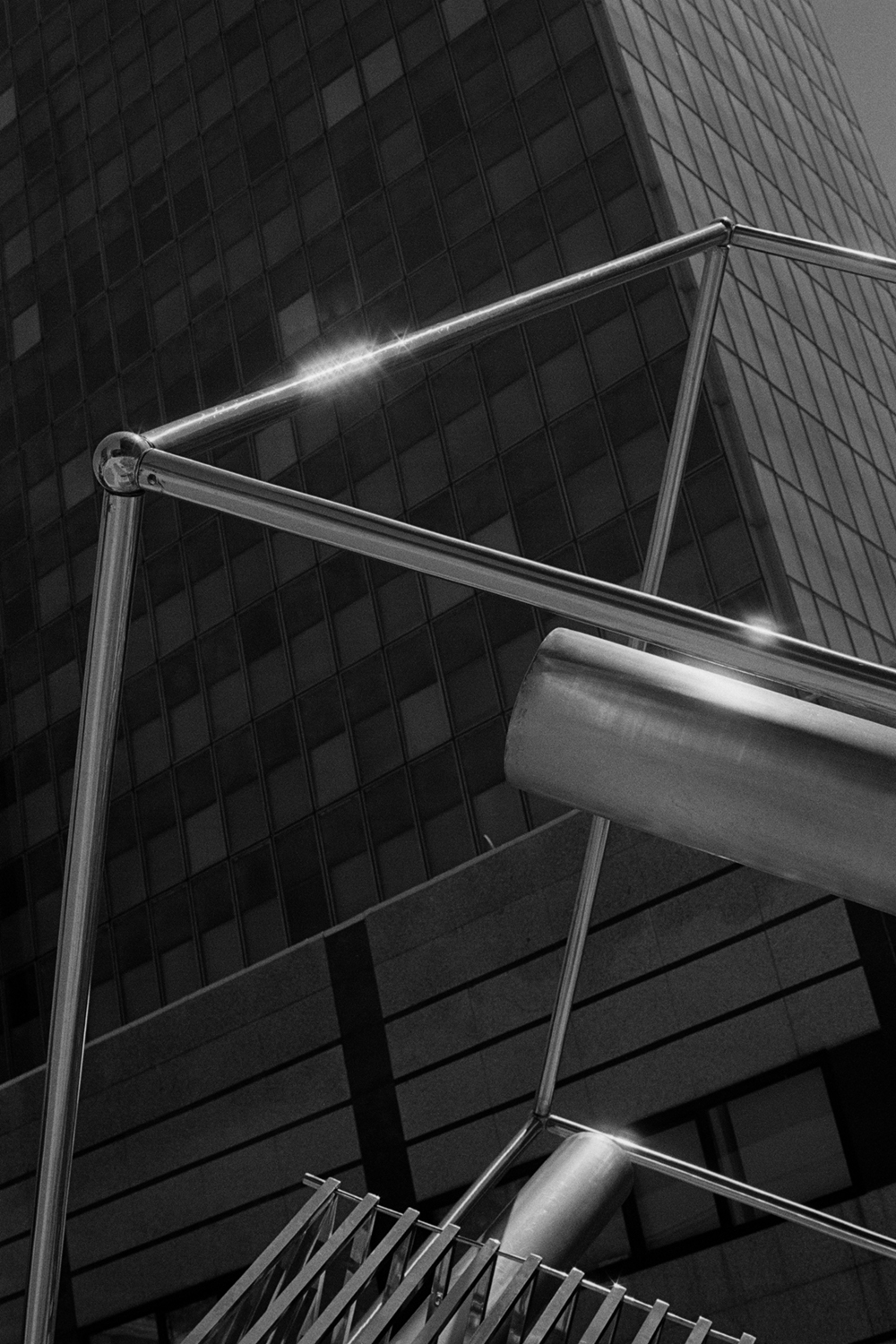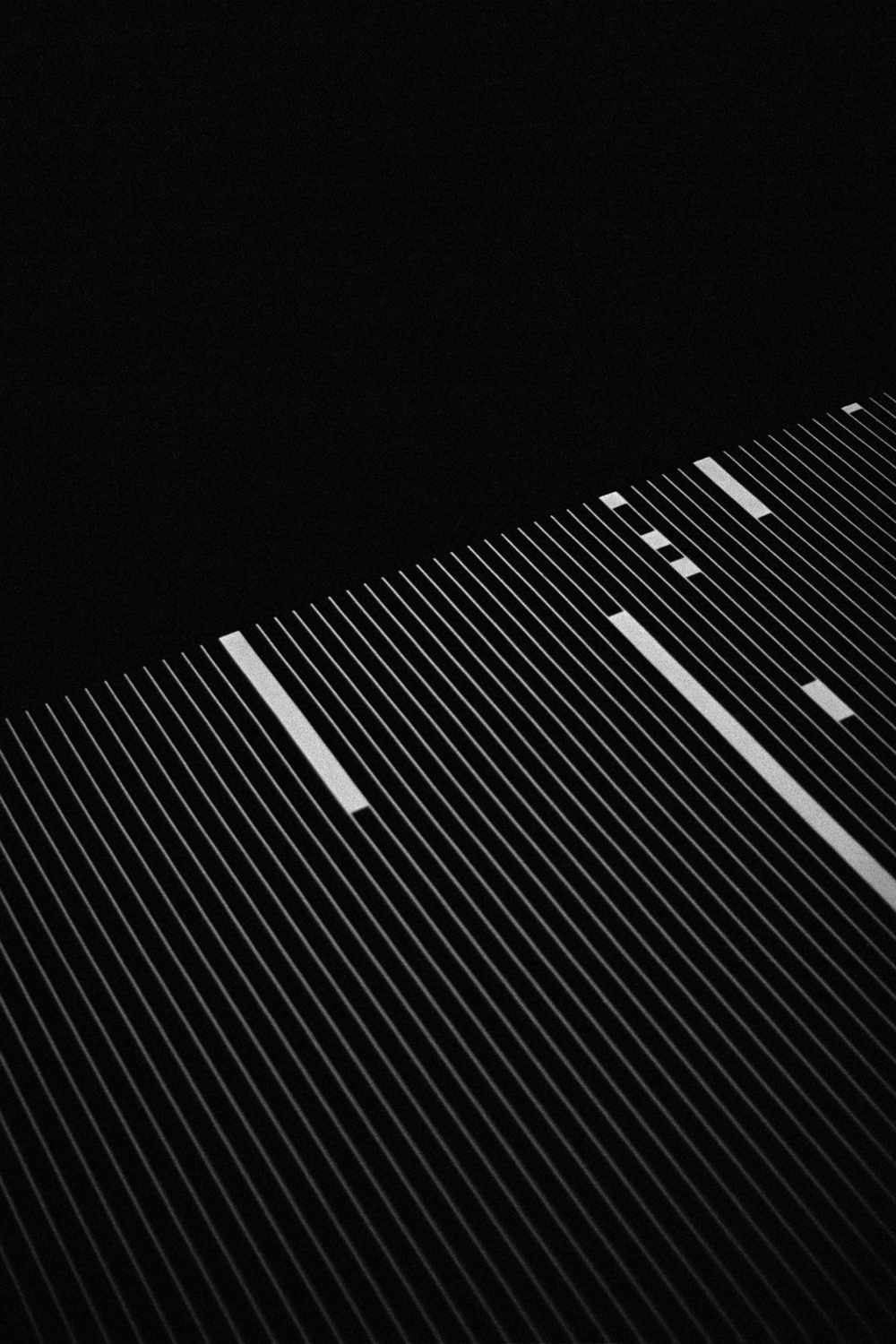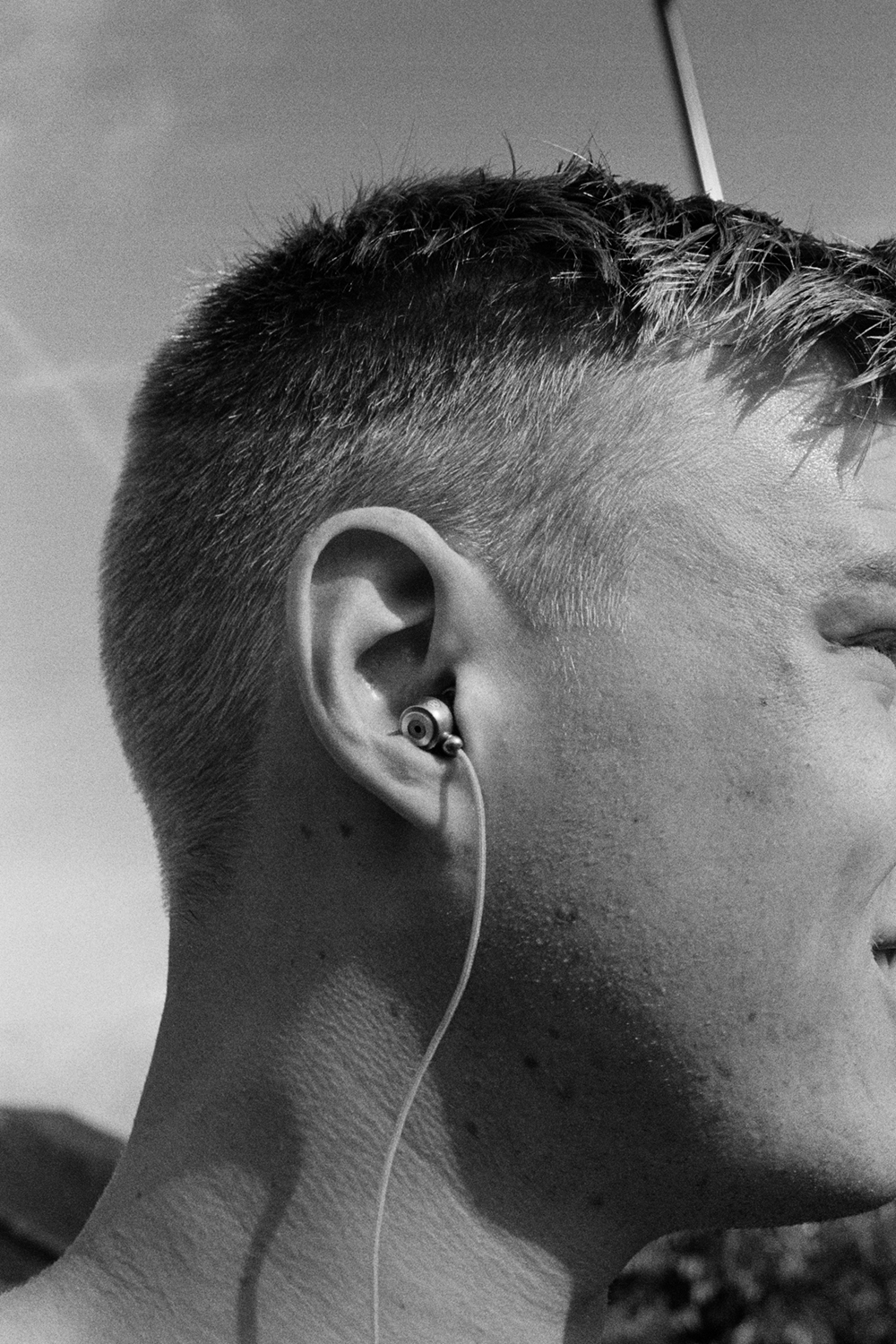Ideas on Talent is our series aimed at talent development in young and emerging photographers. We spoke to photographer Federico Claravino for our latest installment.
PW: Firstly, congratulations on being included in the ING Talent Awards long list. How did you come to photography and what is your background?
I started taking photographs when I moved from Italy to Spain. I hadn’t taken any pictures before, albeit a few rolls I had shot when I was a kid with a point-and-shoot camera, that I discovered a few years ago which seem to be my best so far.
I have never photographed friends, family or holidays, and neither did my parents, so I was partly alien to that ritual. My Dad took some photos of me and my brother when we were really small, but then he stopped doing that and he would photograph other things, things other people wouldn’t bother taking pictures of, like random everyday stuff or people he didn’t know. He was looking at things all the time, he was fascinated by the way things looked in photographs. We made a book together with his latest pictures and titled it Magari, which is an Italian word that means possibly, maybe, but also if only. The first photos I took as an adult connected to that feeling, some kind of longing or nostalgia. It might be something inherent to the medium, the mix of closeness and distance, of presence and absence, the fact that it speaks to you in its own kind of time, connecting the past to the present, like relics and fossils do.
What helped me give some kind of direction and structure to that was to start studying at BlankPaper Escuela. I needed to be alone to take pictures, but I also needed someone to see them and talk about that together. We would share our work, spend hours talking, Fosi Vegue would show us books and introduce us to the work of other contemporary Spanish photographers, like Ricardo Cases or Cristobal Hara. It was very exciting, and I learned something I would apply to teaching later on: in order for a course to really work, it is not only about what you teach, it is above all about the environment you help to create.
Photography helped me to find some meaning in my life in a moment in which I felt alone and rather lost. I had studied literature in Italy for one year, then I dropped out because I felt what I really wanted to do was to write, and at uni I was only getting other people’s smart thoughts about marvellous stuff that had already been written. So I studied two years of “Narrative Techniques” at Scuola Holden, in Turin. I got out and wanted to write novels and short stories, but I ended up working for a few months writing screenplays for a TV sketch comedy show, and got sacked pretty soon because I was really bad at it, plus I couldn’t give a damn.
So I moved to Madrid, where I made a living by teaching English and working as a barman, and started writing a novel. Thankfully, a short time passed before the novel was stolen, along with my computer. I switched to photography.

PW: We can see you’ve been included in the Levallois Prize shortlist focusing on young photographic talents this year as well as the ING award. How does winning prizes help you in your career?
FC: I don’t consider mine a career in the first place. That would take a lot of freedom away from me. I am happy if my work gets to be seen by other people, because I am happy when I get to see other people’s work and it moves something inside me, so I want to contribute to that kind of exchange. I don’t think I will ever make a living out of my own personal work, almost no photographer I know does. Photographers usually live off assignments or other jobs, and I intend to make a living out of teaching, because I love it.
In that perspective, prizes might help your personal work to reach a broader audience, but they seldom do in my opinion, as most of the people who actually know about the prizes are usually the same that submit work for them, i.e. photographers and publishers, plus the odd enthusiast, collector or gallery owner. So in the end it boils down to the money in most cases, usually modest sums, but that in the precarious economy of the average photographer can allow one to dedicate more time to making work, at least for a while. It is like that for me, at least. The reason I occasionally submit work is mainly economical: if you win a prize you get some money, plus some extra exposure, which means you might get more assignments (in my case teaching assignments like workshops and so on).
On the other hand, what I feel is the downside of prizes, as well as of some grants, residencies, and so on, is that they keep people that want to make a living out of their own work hooked on a series of mechanisms that tend to shape the work they make. A lot of brilliant people that could potentially find revolutionary ways of applying photography to life and to society end up becoming professional portfolio showers, statement writers, and so on. So you suddenly see a lot of very similar work coming out as market fashions come and go.
Plus, selection processes make all of the nasty stuff come out of people: envy, narcissism, rivalry. In the end, photographers, who could work collectively to challenge the status quo in all sorts of ways by means of one of the most powerful mediums ever created by mankind, end up being atomised individuals competing within a very small sector for ridiculous sums of money and ephemeral fame.
I am not saying all prizes are inherently bad, some really help some photographers at some stage of their creative process (“dummy awards” come to mind), but we might want to find smarter ways of funding our work and of reaching a broader audience.

PW: You’ve had exposure for quite a few bodies of work, The Castle, Italia O Italia and Ukraina Passport. Are there any re-occuring threads throughout them all?
FC: I don’t really know. I guess there are, but it might be too soon for me to be able to see that, they are all rather recent bodies of work and one needs time to feel distant enough to analyse one’s own work that way. I might never be able to do that, maybe other people should do it instead, that would be really interesting for me.
Obviously there is one constant research in the three bodies of work, a photographic one, a process of constant discovery of the medium and of how I relate to it and apply it to different subject matter. So I can see an evolution in the more formal aspects of the images: a gradual disappearance of horizontal frames, as the camera grows closer to subjects with each work, cutting the world into smaller pieces, which goes hand in hand with the increasing use of montage, and so on.
As for what the work is about, its subject matter and how it is treated, I can see a similar pattern at work. Ukraina Pasport is rather classic documentary work, but with a very subjective approach, something in the tradition of Robert Frank’s The Americans, although maybe more intimate and less ambitious.
Italia o Italia moves away from people and into the fabric of the place itself, introducing more historical and political elements, but it does so by using images that are less narrative, more ambiguous.
The Castle is a step forward in the same direction. Colour disappears, along with a sense of place and a linear, narrative sequence, the structure becomes looser and more complex but the montage becomes tighter, the political elements come out more strongly, words appear, single images lose autonomy. I would say there is something about power, and history, in all three bodies of work, as well as in what I am currently working on.
I feel photography is the ideal medium to oppose hegemonic history because it can undo time, or rather it can activate it differently, just like imagination does. John Berger wrote about that “glimpse through the window which looks across history towards that which is outside time”.
PW: In Italia O Italia, we see ‘street photography’ that breaks outside of the traditional norms of a street photograph – we never see any faces or living things that fill the streets. We’re privy to a quiet, revealing side of Italy. Can you tell us how you approached this series?

FC: The only thing that can relate Italia o Italia to the tradition commonly referred to as “street photography” is part of the way the images are made, which is by roaming the streets endlessly, like a flaneur, and taking pictures. The subject matter of street photography is the city, and in this sense there is also an affinity, although in Italia o Italia cities (and small towns) are more of an excuse to focus on certain aspects of Italian history, identity, and architecture.

It is about a sense of place, and about how places are charged with collective memory. In some way, places are images and images are places. The city in Italia o Italia is a result, rather than a starting point. I used the camera to cut up dozens of different towns and cities around the country for over four years and used the bits and pieces to build a city of my own making. Something akin to Vertov’s famous room with twelve walls: I too, wanted to work like a builder.
Then there is everything the work is about, and I want that to remain rather open, I wish the work to be there for others to inhabit. As I said before, there is something there about power and about how it shapes things, there is something about the weight of the past and of its glorious monuments in a country like Italy, and about how the image of a nation is fashioned. There are tons of references to painting and to a tradition of Italian photography. But there is also something there that is a lot more “metaphysical”, many people use that word when they talk about the book and I guess they refer to the symbolism that pervades it, to some kind of surrealism, and to the more or less accidental and very subjective stuff that ended up in there.

PW: How long do you work on a series for? When do you know when it’s complete?
FC: It usually takes me three or four years to work on a series, plus all the time it takes to edit the work and make it into a book, which is another year. I always work on more than one body of work at a time, I use one project to disconnect from the other, so I can come back to it later with a fresh mind. They also usually feed upon each other in funny ways, I often stumble upon ideas for one thing while working on another.
I work a lot and take many pictures, although I use film, which limits the amount of photographs I shoot (I could never process the amount of images a digital camera produces). I work slowly, because I need the images to work on me, I need to let them settle. I look at them a lot over an extended period of time, which is why I print them and put them in boxes. I then use large surfaces to edit, and the editing and sequencing process is also very long. It has to be like that for me, the sequences need to be strong enough and you can see that only over time: I need to allow myself a while to get bored with the weaker images and the weaker sequences. I also need to get feedback from people I respect and process that.
I guess I know it’s complete when I feel it, when I get fed up with it, which is a stupid answer, but it’s always like that for me. In some way a series is never complete. I consider each book a further attempt, another failure, a partial conclusion. In some ways my work never meets my initial expectations, it always falls short of what I had in mind while working on it. But in some other ways it always exceeds my intentions, through what is left open, through what other people put into the work when they read it. I feel it is that incompleteness that makes the work alive, that makes it possible for it to live in others.

PW: Does the process of making a photobook help to round off a project? Is that a good or a bad thing?
FC: Books are not subsequent publications of the series for me, they are the end products of each project. I work with a book in mind from the start, just like others work on a movie or on a novel. Photobooks are the contexts in which these series of images exist. Of course the same images can live within other contexts, and it’s great to use them to make exhibitions or to create apps for tablets and mobiles, and so forth, I just feel books work better for me and that’s what I prefer doing right now. They allow me to create complex sequences and deal with great amounts of information. I haven’t managed to get all of that inside an exhibit so far.
It is the opposite for other photographers I know, although I cannot really remember seeing a photography exhibition that has given me what some books have. But that is subjective, and there are many other ways of using photography beyond photobooks and exhibitions.
What I love about books is that they are sitting there on a shelf and you go back to them over and over, you dig deeper in them every time. Digital content allows for work to be ubiquitous and easily accessible, which is great, but it also exists within a context, which is usually internet, or in any case a device full of other information, so for me it gets somehow diluted. I cannot focus enough on anything on a computer, content branches off in so many directions all the time.
I also really enjoy good shows, I love it when someone manages to make the work interact with the space and to create some kind of place in which you can experience the work and walk through it. But I hate the fact that they are almost always ephemeral, which I understand is also something beautiful about them. I guess that’s just the way I am, when I love something I want to be able to go back to it.

PW: As well as your own practice, you teach at BlankPaper Escuela, how do you balance this? Do you find it hard to make time to make work?
FC: Not at all. I manage to balance the two things rather well. What I learn by teaching and by preparing a syllabus often ends up giving me ideas for my own photographic work, as well as the other way around. BlankPaper is a very stimulating environment, it’s not only a school but also a meeting point for people passionate about photography, and I have always found the vibrant scene there very motivating. You get to interact with all sorts of people working on all sorts of things with photography, which keeps your mind open and makes you feel there are a lot of other crazy people doing this apart from you.
What’s more, I really enjoy teaching, sometimes I enjoy it even more than making work. You get to help people to do things you would never be able to do, things you would never even think of. It is extremely rewarding, although very tiring and often frustrating.
Apart from BlankPaper, I also had the opportunity to give a few workshops and lectures in other contexts outside of Spain, which brought me closer to realities that were new to me. This summer, for example, I taught a week-long workshop at ISSP in Latvia, and the people I met there, the work I saw and the creative process I witnessed have positively changed my views on photography, and will definitely have an impact on my new photographic output. I am really looking forward to other experiences like that, to get to teach abroad more and more. I also would like to move to the other side of the classroom (if it has to be a classroom) and be a student again. I believe that all of these efforts (the books, the teaching, the exhibits…) go towards one common direction, they are part of the same contribution, the same dialogue we establish with other people through what we do.


PW: Finally, what’s next for you?
FC: Luckily, I cannot read the future, but as far as my photographic work is concerned, I am working hard on some new projects I am really excited about. One of them, “Hereafter”, is almost finished, and I will be looking for a publisher rather soon. It is my most ambitious book so far, both because of its subject matter and because of the sheer amount of images. The kind of photography is also considerably different from anything I have done so far, it is a lot more narrative in a way, maybe more subtle, more like prose. I was thinking of these long 19th century novels I love so much while working on it, although obviously it has nothing to do with that in the end.
Then there is this other thing I have just started working on, a crazy idea involving a drowned rhinoceros, WWII bunkers, the Count of Monte Cristo, and time travel. I am also buying cheap rolls of film and shooting every day, the idea is to take pictures I don’t usually take, and use it as a way of discovering new images. It might not become a book, it might not become anything but part of a process. Actually every book, every body of work might be only a tiny part of an ongoing process that one chooses to share with others. I always think it will be interesting to look back at all of it years from now and have a laugh, see all of the ideas and the images repeat, rhyme and change over time, the threads, the currents below, all that invisible stuff suddenly made visible by its accumulation and the passing of time.

For more on our Ideas Series, click here.
For more on Federico’s work, click here.

